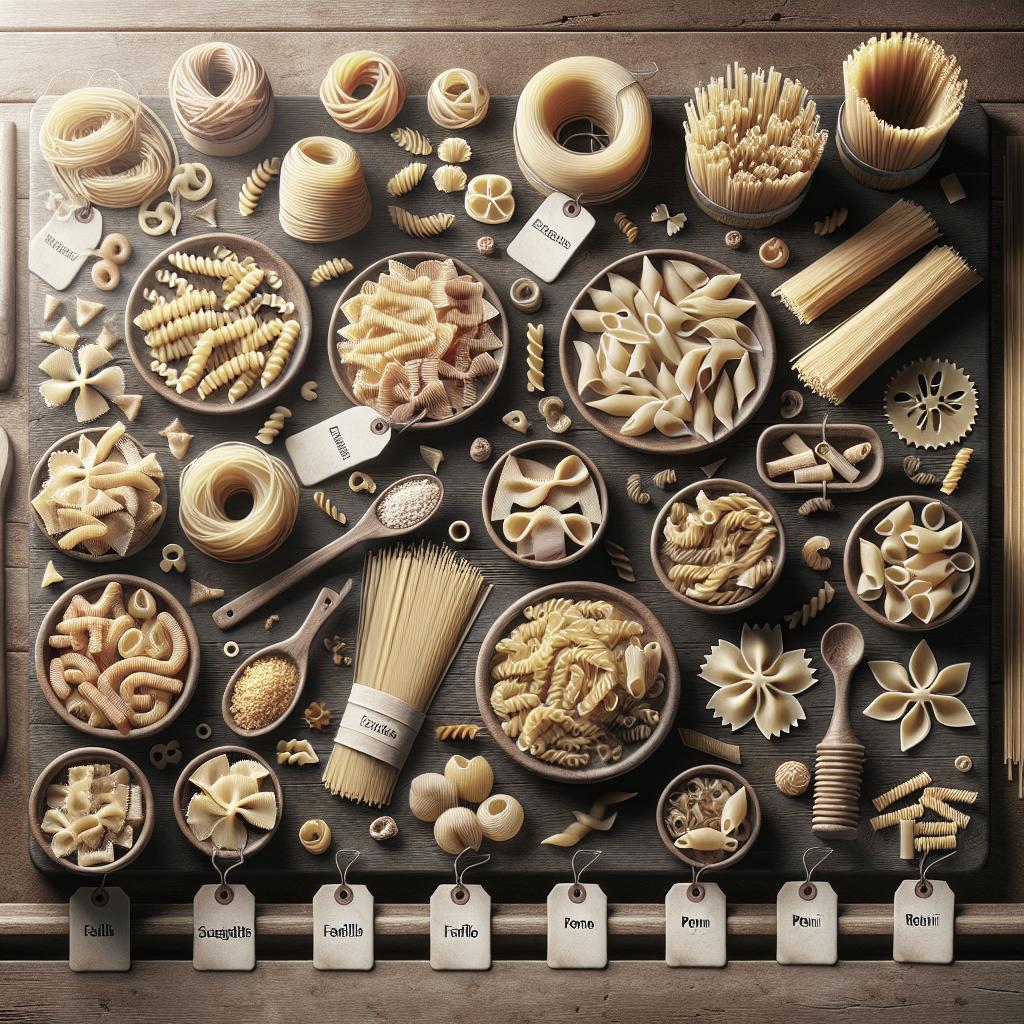“`html
The Best Oils for Making Pasta
Delving into the world of pasta opens up a realm of delicious possibilities, transforming simple ingredients into an array of culinary delights. Central to this transformation is the choice of oil, which can significantly influence the texture, flavor, and aroma of your dish. This guide explores the essential aspects of making homemade pasta. Learn about the necessary equipment, critical ingredients—especially the selection of oils—and the step-by-step process of pasta creation. We also offer tips for serving suggestions that highlight your pasta’s freshly made flavors. By the end, you’ll be equipped with the knowledge to craft delectable, restaurant-quality pasta right at home.
Homemade Pasta
Equipment
Creating homemade pasta requires a few basic tools that help streamline the process. A pasta roller, for instance, is integral to achieving that perfectly thin and uniform pasta sheet. If a machine is unavailable, a rolling pin can suffice for those ready to employ a bit of elbow grease. Additionally, having a clean countertop or large wooden board to work on is essential.
A sharp knife or a pasta cutter is necessary to shape your pasta into the desired format, whether it be fettuccine, pappardelle, or tagliatelle. You might also consider investing in a drying rack if you plan to make pasta frequently, as it allows the strands to dry evenly without sticking together.
Ingredients
A fundamental item in any pasta recipe is flour—typically all-purpose or semolina. However, the real magic lies in choosing the right type of oil, a critical ingredient that influences your pasta’s texture and elasticity. Olive oil is a classic choice, renowned for its smooth texture and subtle flavors. It provides elasticity to the dough and enhances the flavor profile.
Grapeseed oil has been gaining popularity due to its neutral flavor and high smoking point, rendering it ideal for those who prefer their pasta to taste less olive-oily. Meanwhile, canola oil, with its mild taste and light texture, makes it an effective substitute for neutral-tasting resulting pasta.
Instructions
Start by measuring two cups of flour and form a mound on your clean working surface. Create a well in the center and crack in two large eggs. Add a tablespoon of your chosen oil into the well. Using a fork, gently blend the eggs and oil, gradually incorporating flour until it forms a cohesive dough.
Knead the dough for about 10 minutes, or until it’s smooth and elastic. Allow it to rest for around 30 minutes at room temperature. Roll the dough out with a pasta machine or by hand to your desired thickness. Cut into strips, shapes, or sheets depending on your pasta preference.
Notes
Always let your dough rest before rolling to relax the gluten network, making it easier to work with. If you’re in a humid area, adjust your flour slightly since excess moisture can affect the dough consistency. Experiment with mixing different flavoured oils directly into your dough for a personalized taste.
If pasta dough is too dry or crumbly, adding another tablespoon of oil can help without altering the flavors significantly. Moreover, remember that practice makes perfect—be prepared for trial and error until you find the proportions and techniques that best suit your kitchen and palate.
Homemade Pasta Recipe Ingredients
The foundation of any authentic homemade pasta is quality ingredients, with the choice of oil playing a pivotal role. For a classic and rich taste, extra virgin olive oil is traditionally used, adding a delicate essence that complements many pasta sauces. Its health benefits and rich taste make it a popular choice among pasta aficionados.
For a twist, consider using flavored oils like basil or garlic-infused olive oil. These enhance your pasta with hints of garden-fresh or earthy tones, ideal for those craving a burst of flavor in their dishes. Alternatively, truffle oil can transform a simple pasta into a gourmet meal with its strong, aromatic presence.
How to Make Pasta
Starting the process of making pasta involves organizing your ingredients and ensuring you have ample space to work on. Mix your chosen flour along with a pinch of salt, creating a well in the middle ready for eggs and oil. The type of oil you choose—whether flavorful or neutral—will subtly influence your final product’s elasticity and flavor.
Once your dough is well-kneaded and rested, it’s time to roll it out. Use a pasta machine or do it by hand, ensuring your sheets maintain a uniform thickness. This ensures even cooking and a consistent culinary experience.
Homemade Pasta Serving Suggestions
Once your pasta is cooked, choosing the right sauce is paramount. Olive oil-based pastas pair well with simple sauces like aglio e olio, pesto, or a light marinara. These allow the pasta’s tenderness and the oil’s subtle hints to shine through without overwhelming it.
For richer flavors, try incorporating your pasta into a creamy sauce or bake it with layers of cheese and vegetables. Each combination highlights the pasta’s delicate structure amidst bolder flavors. Consider adding fresh herbs and grated cheese as finishing touches to uplift the final Presentation.
Next Steps
| Section | Description |
|---|---|
| Homemade Pasta | Discusses necessary equipment, ingredients focusing on oils, and detailed instructions with useful notes. |
| Homemade Pasta Recipe Ingredients | Highlights the importance of oil choices in influencing flavor and texture. |
| How to Make Pasta | Provides step-by-step guidance on making pasta from scratch, detailing the role of oils in the dough. |
| Homemade Pasta Serving Suggestions | Offers ideas for pairing pasta with complementary sauces to enhance taste. |
“`


